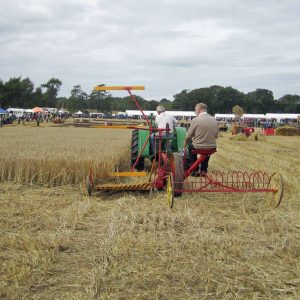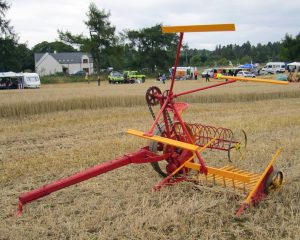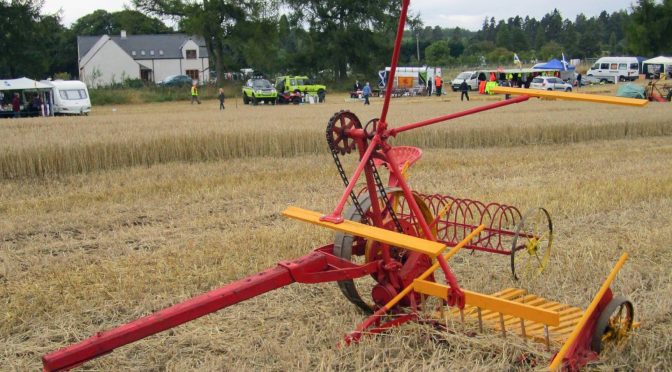Back in 1890 the farmers of Portsoy, Banffshire, could purchase locally made reapers from the MacDonald Brothers, Portsoy. The brothers had been making agricultural implements and machines from 1878; their early manufactures included harrows and turnip lifters.
 By 1885 they had started to make back delivery reapers, a manufacture which they continued to make into the early twentieth century. They had a number of models. In 1890 one of them was the Princess, a one horse self-acting back delivery reaper. Another two from 1894 were the Portsoy self-acting back delivery reaper and the Simplex self-acting back delivery reaper. The brothers were among a number of reaper manufacturers in Scotland, others including the famous Kemp, Murray & Nicholson, Stirling, Alexander Jack & Son, Maybole, as well as Auchinachie & Simpson, Keith.
By 1885 they had started to make back delivery reapers, a manufacture which they continued to make into the early twentieth century. They had a number of models. In 1890 one of them was the Princess, a one horse self-acting back delivery reaper. Another two from 1894 were the Portsoy self-acting back delivery reaper and the Simplex self-acting back delivery reaper. The brothers were among a number of reaper manufacturers in Scotland, others including the famous Kemp, Murray & Nicholson, Stirling, Alexander Jack & Son, Maybole, as well as Auchinachie & Simpson, Keith.
By 1889 Henry Stephens could note that “in all parts of the United Kingdom, and on almost all farms of any considerable size, the reaping machine has superseded the slower and older appliances for cutting down the corn crops.” It was to be only a few years later that binders would start to come into force, marking another revolution in the harvest field.
 If, in 1890, the users of the MacDonald Brothers’ reapers could have looked into the future to see how the harvest was cut and harvested today they would have been astounded. For them, their reaper was an efficient harvesting implement. It took the hard work out of cutting the crop and laid it in a neat row to be made into sheaves. It transformed the harvest field.
If, in 1890, the users of the MacDonald Brothers’ reapers could have looked into the future to see how the harvest was cut and harvested today they would have been astounded. For them, their reaper was an efficient harvesting implement. It took the hard work out of cutting the crop and laid it in a neat row to be made into sheaves. It transformed the harvest field.
If we look back at the reaper we find it difficult to understand how innovate it was in its day: it was one of the most important agricultural inventions of all time. But if you look closely at the combine you can see its ancestor, the reaper, incorporated into its design. It’s there!
The Princess reaper from 1890 was photographed at the Strathnairn Farmers Association Working Vintage Rally & Display, September 2013.
